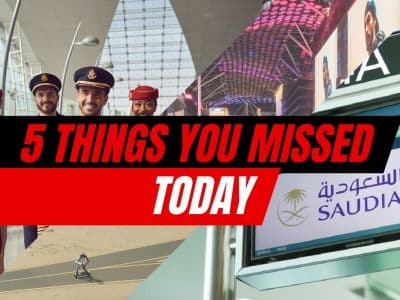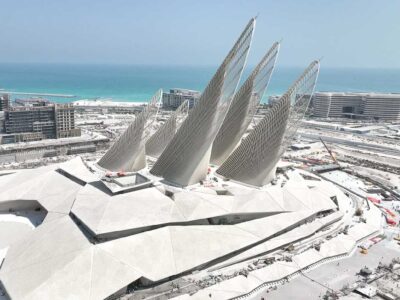Venezuelans’ blackberrys buzz with urgent news on Twitter: an accident in La Trinidad industrial zone, a tie-up at the old toll booth on the mountain, a mudslide onto the Prados del Este highway.Tweets flag potholes, warn of flooded roads and divulge police checkpoints on weekend nights. Politics laps into the Twitter alerts that Caracas drivers use to navigate traffic-choked streets, as posters rage at the government and stalled infrastructure projects.
Caracas motorists, burning the world’s cheapest gasoline and driving twice as many cars as roads can handle, may be global leaders in using Twitter Inc’s social networking website to outflank traffic. Their 9,598-strong group forum, called Trafico, shows growth of ten percent a week. Venezuela’s per-capita use of smart phones outpaces Europe’s, according to Research in Motion Ltd, BlackBerry’s manufacturer.
“There’s a big supply of texts and mobile devices and a lot of demand for traffic reports since traffic’s unbearable,” said Juan Nagel, an economist at economic consulting firm ODH Grupo Consultores in Caracas, who has studied the city’s traffic problems.
“Even though the state’s on top of you and regulating everything, Venezuelans are very entrepreneurial.”
The explosion of Trafico is fuelled by crosscurrents in Venezuela’s economy. President Hugo Chavez, pushing for what he calls a revolutionary socialist society, has raised taxes on luxury goods and denounced consumerism. Some Venezuelans, boxed in by currency controls, inflation and low interest rates, are spending more on consumer goods rather than put depreciating bolivars in the bank.
Cars in particular are a hedge against 29 percent annual inflation. Second hand models often fetch higher prices. New car sales plunged 57 percent in October on import restrictions and slashed dollar allocations for paying suppliers abroad.
Public transit projects, including an express-bus system and extensions of the Caracas subway, have been on hold since oil revenue plunged more than 50 percent in this year’s first half, worsening traffic along torn-up streets.
Smartphone marketing in Venezuela plays to Chavez’s currency controls. Venezuelans are allowed $400 annually for online purchases, and Web ads for BlackBerrys suggest spending the quota on devices sold for precisely that price.
“There’s irrational consumption in Venezuela because of inflation,” said Asdrubal Oliveros, a director at economic consulting firm Ecoanalitica in Caracas. “It’s great to borrow but horrible to save. Venezuelans also have a very high brand awareness and the BlackBerry has become a symbol of status and fashion.”
This year, seven percent of mobile phones sold in Venezuela will be smartphones, compared with five percent in all of Latin America, said Omar Salvador, an analyst at telecommunications research firm Pyramid Research in Cambridge, Massachusetts. Smartphones are expected to rise to twelve percent of sales in 2010, he said.With smartphones constituting about nineteen percent of mobile phone sales globally, there’s potential in Venezuela for both growth and more competition for Waterloo, Ontario-based RIM, the market leader, Salvador said.
RIM doesn’t provide country-specific figures on market share, said Alex Zago, the company’s market intelligence manager for Latin America. RIM shares have climbed 54 percent this year to $62.69 on the Nasdaq Stock Market.
“Venezuela has the penetration of smartphones we see in countries like the US and Canada,” he said.
That’s feeding the growth of Trafico, which has generated about 23,000 messages since it began in 2007.
“God! Kilometre zero of the Pan-American highway is a disgrace,” a tweeter using the name Elnicota wrote November 5. “Diosdado, Chavez, stop politicising everything,” the poster said, referring to Public Works minister Diosdado Cabello and the president.
“What chaos in the city, the country has slipped from their hands,” Edichi06 wrote.
Caracas is among the worst dozen cities for traffic in the world, said Lee Schipper, a researcher at the Centre for Global Metropolitan Studies at the University of California, Berkeley. The population of 3.2 million makes Caracas the 94th-biggest metropolitan area in the world, according to the Times Atlas of the World.
Radio reports on Caracas traffic consist of a single helicopter reporter providing half-hour updates on several commercial stations. Live traffic-tracking options on Google Inc’s Google Maps and on GPS systems don’t work in Venezuela.
Trafico users, by contrast, learned November 5 that the central university entrances and a road were closed in the Las Mercedes neighbourhood.
During rainstorms early this year, a user warned of street flooding, embedding a linked photo of a floating car for emphasis.
Knockoffs of Twitter traffic pages are cropping up in Caracas. El Universal newspaper has one with 4,945 followers and copycat-named TraficoCCS has 2,981.
Outside Venezuela, Trafico Costa Rica is the most similar site, Twitter searches show. It has 1,045 followers.
Posts on the US’s Commuter Feed website are posted only about three times a day per city. Its creator, Ron Whitman, 28, said activity has fallen off since the Los Angeles-based site started in March 2008.
Commuter Feed warns twitterers not to tweet while driving. In Caracas, with speeds averaging eleven to fifteen kilometres an hour (seven to nine miles per hour), drivers have enough down time to tweet en route, Nagel said. The city has 1.3 million registered vehicles using roads built to handle 30 percent of that volume, according to a 2007 report from the Venezuelan Civil Engineering Society.
“This isn’t the First World, where people are texting while doing 40,” Nagel said.
“This is Venezuela.”
This article is courtesy of Bloomberg.








